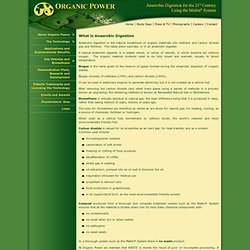

What are the combustion byproducts of methane or natural gas? Comparasons to ethanol, pump gas, etc., wou. The combustion byproducts are largely the same for all these fuels, though there are slight differences in trace pollutants and major differences in the amount of carbon dioxide released.

Natural gas is the cleanest of all the fossil fuels. Composed primarily of methane, the main products of the combustion of natural gas are carbon dioxide and water vapor, the same compounds we exhale when we breathe. Coal and oil are composed of much more complex molecules, with a higher carbon ratio and higher nitrogen and sulfur contents. This means that when combusted, coal and oil release higher levels of harmful emissions, including a higher ratio of carbon emissions, nitrogen oxides (NOx), and sulfur dioxide (SO2). Coal and fuel oil also release ash particles into the environment, substances that do not burn but instead are carried into the atmosphere and contribute to pollution.
Methane - CO2 + 2 H2O Ethanol - 4 CO2 + 6 H2O Gasoline - 8 CO2 + 9 H2O. Innovate.pdf. The Anaerobic Digestion Process. The Complete Biogas Handbook: main page. What is Anaerobic Digestion - Organic Power. Anaerobic digestion is the natural breakdown of organic materials into methane and carbon dioxide gas and fertiliser.

This takes place naturally, or in an anaerobic digester. A typical anaerobic digester is a sealed vessel, or series of vessels, in which bacteria act without oxygen. The organic material contents need to be fully mixed and warmed, usually to blood temperature. Biogas is the name given to the mixture of gases formed during the anaerobic digestion of organic wastes. Biogas consists of methane (c70%) and carbon dioxide (c30%).
It can be used in stationary engines to generate electricity, but it is not suitable as a vehicle fuel After removing the carbon dioxide (and other trace gases using a variety of methods in a process known as upgrading) the remaining methane is known as Renewable Natural Gas or Biomethane. Biomethane is virtually identical to natural gas, the main difference being that it is produced in days, rather than taking millions of years, billions of years ago. BiogasHandbook_C35_basic-generator-types.pdf (application/pdf Object) Photobiological hydrogen production and carbon dioxide fixation. Biogas and Biodigester FAQ's. What is biogas?

Biogas is a gas produced by anaerobic digestion (in the absence of oxygen) of organic material, largely comprised of methane (about two-thirds). Biogas is often called "marsh gas" or "swamp gas" because it is produced by the same anaerobic processes that occur during the underwater decomposition of organic material in wetlands. What are some online biogas resources? Aside from our main biogas page, we have compiled a number of different valuable sources of biogas information: Learn about biodigester construction - See the biodigester design that the women's group used for its biogas project that was featured in the Summer 2007 issue of the Permaculture Activist.
What is a biodigester? A biodigester is a tank that processes the organic material that produces biogas. What material can I use to feed a biodigester? In theory, any organic material can be decomposed anaerobically to produce biogas, but some materials work better than others. Yes. Biogas leaks Other problems.